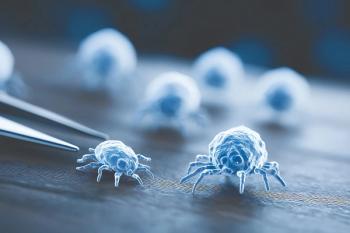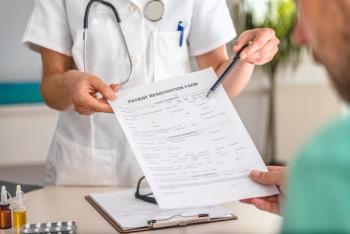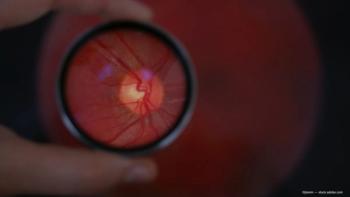
Study finds human breast milk may aid in corneal wound healing
Key Takeaways
- Human breast milk enhances corneal wound healing by promoting re-epithelialization and cellular proliferation, as evidenced by increased Ki67 levels.
- Breast milk-treated eyes showed up-regulation of alpha-V integrin and increased macrophage activity, indicating improved healing processes.
The rationale for the study was anecdotal reports of the effects of breast milk used by mothers to treat blocked tear ducts, rashes, and a chemical corneal burn in babies.
Sarah N. Pimple, MD, and colleagues from the Department of Ophthalmology, University of Colorado School of Medicine, Anschutz Medical Campus, Aurora, CO, reported that human breast milk “offers a potential, novel treatment as it contains bioactive molecules important in epithelial cell healing.”1
The rationale for the study was anecdotal reports of the effects of breast milk used by mothers to treat blocked tear ducts, rashes, and a chemical corneal burn in babies. The investigators led by first author Pimple, explained that corneal epithelial defects from trauma or surgery heal as new epithelial cells grow centripetally from the limbus and replenish the epithelium. Corneal wound healing requires cell-signaling molecules.
To build on this knowledge and determine if human breast milk had potential as a treatment for corneal wounds, the investigators conducted a murine study in 8- to 12-week-old Balb/c mice. Following application of anesthesia, a 2-mm central corneal epithelial defect was created in each animal that then was assigned randomly to treatment with 1 of the following: human breast milk, or an ophthalmic ointment containing neomycin, polymyxin B, dexamethasone, or saline. The mice were treated 4 times daily for 2 days, after which time the wound areas were measured 4 times out to 48 hours after the wounds healed.
Effect of human breast milk on wounds
Pimple and colleagues reported, “Wounded corneas treated with human breast milk demonstrated increased re-epithelialization 8 hours after the injury compared to saline treatments.”
Enzyme-linked immunosorbent assays showed significantly higher levels of Ki67 in the eyes treated with human breast milk compared with those treated with saline at 8 hours (p = 0.0278). Ki67 is a protein that is produced in cells that are actively dividing, the authors explained.
In addition, more cells positive for Ki67 were present in the animals treated with human breast milk compared with those treated with saline at 8 and 24 hours after injury (p = 0.0063 and p = 0.0007, respectively).
An inflammatory analysis showed that in the eyes treated with human breast milk, the interleukin-1β levels were similar to that in the saline group and higher than that in the dexamethasone-treated eyes (p < 0.05).
Staining for CD11b, a macrophage marker, showed that the human breast milk-treated eyes had significantly more positive cells compared with saline. Quantitative reverse transcriptase polymerase chain reaction of limbal stem cell markers showed up-regulation of alpha-V integrin 8 hours after wounding in the human breast milk-treated eyes compared with saline.
Pimple and colleagues concluded, “HBM treatment on corneas with débridement of epithelium demonstrated improved healing, cellular proliferation, and up-regulation of alpha-V integrin after wounding. Future studies could investigate the limbal stem cell marker response to different signaling molecules in human breast milk to better understand the efficacy of this potential therapy.”
Reference
Pimple SN, Pedler MG, Shieh B, et al. Human breast milk enhances cellular proliferation in cornea wound healing. Curr Eye Res. 2024;49:1138-1144; https://doi.org/10.1080/02713683.2024.2374836
Newsletter
Don’t miss out—get Ophthalmology Times updates on the latest clinical advancements and expert interviews, straight to your inbox.









































